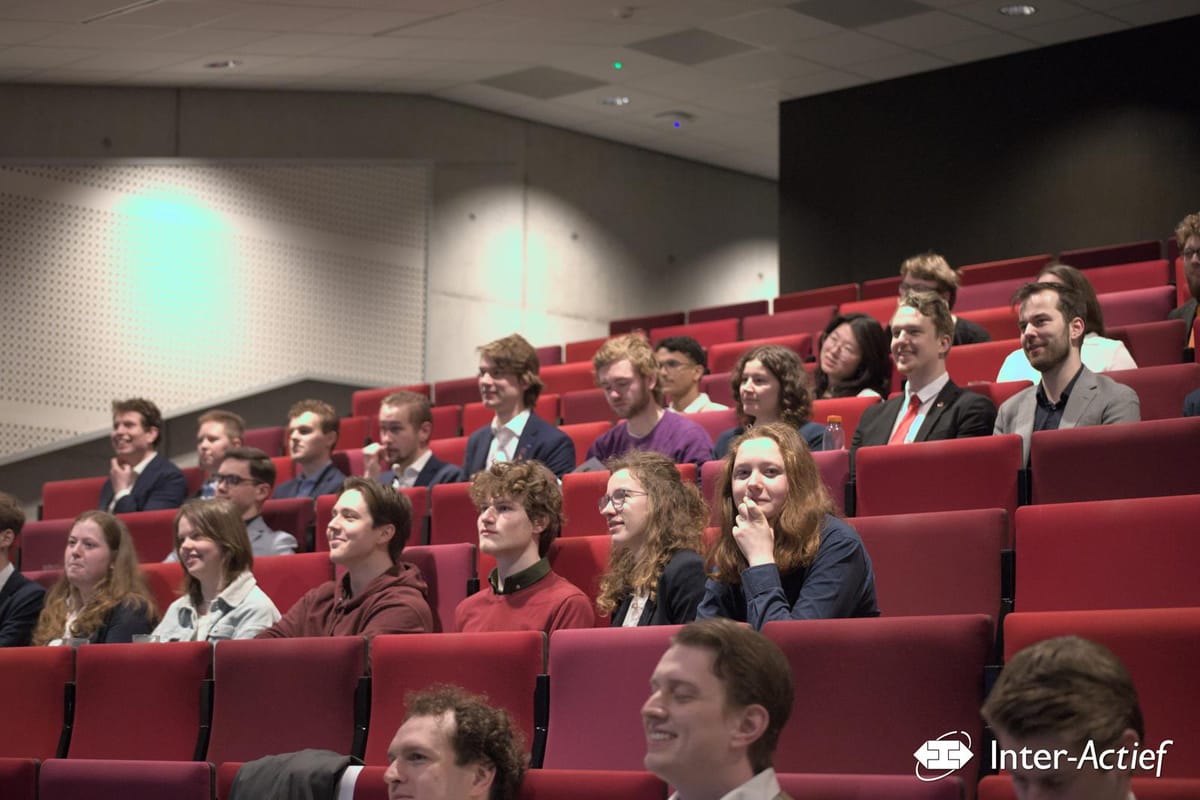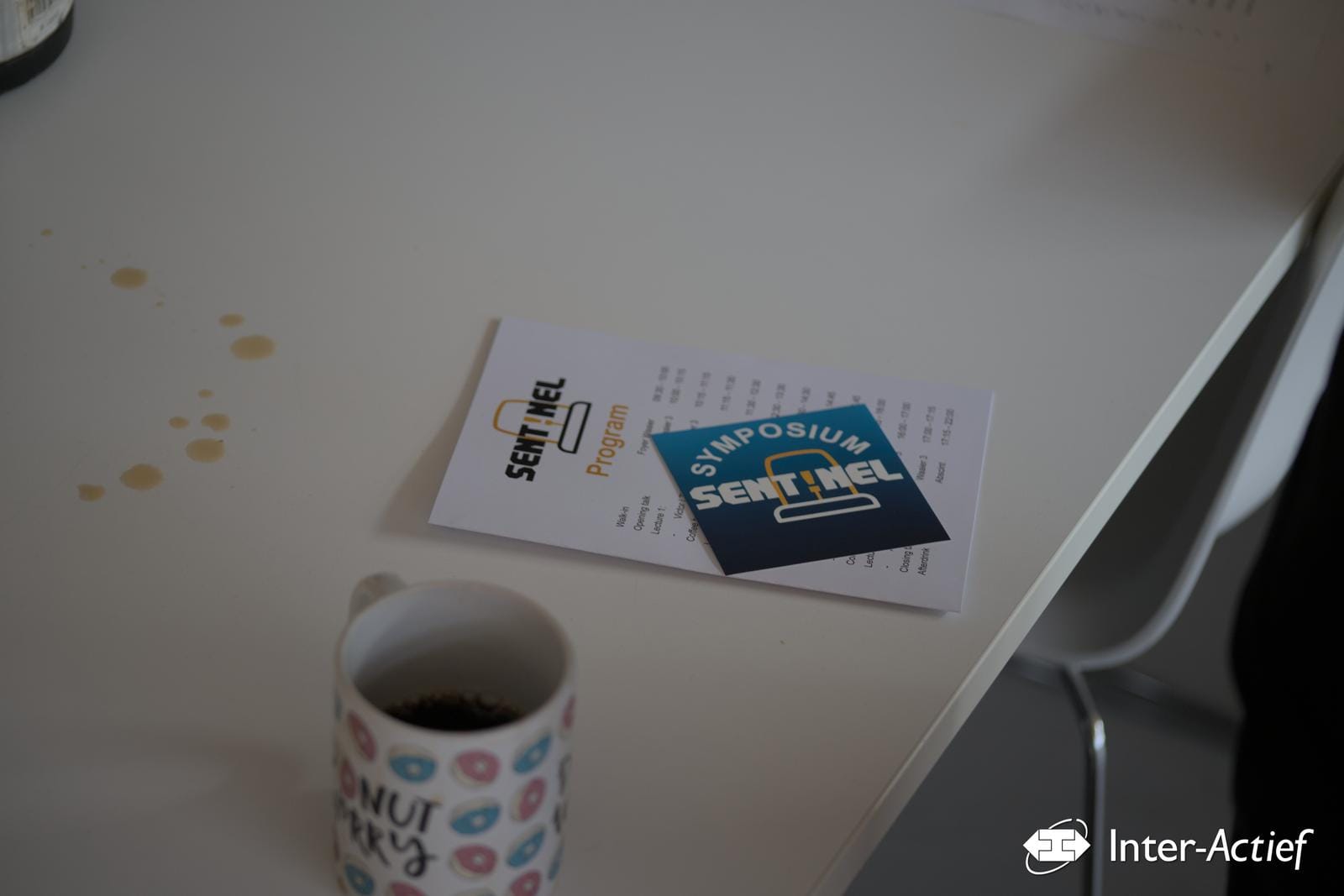Symposium Sentinel - What Did you Miss?

One of the best-known traditions of Inter-Actief is the Symposium, which is held annually on a specific topic within the wide field of Computer Science. The Symposium attempts to provide students with detailed information on a specific topic and introduce them to companies that are active in the same. This event provides an excellent overview of the various career paths in the sector.
Throughout the day, there are a number of speakers who talk about subjects relating to the chosen theme, giving students a chance to study the field in detail. In between talks, students get a chance to meet professionals from the field in one-on-one sessions, discovering what they do and learning about careers in the industry.
This year, the Symposium Sentinel was held on the 4th of March right here on campus. The symposium is themed around the importance of IT systems in public safety. The symposium is named after the noun “sentinel”, meaning a soldier or guard whose job it is to stand and keep watch, which follows the role that IT fulfills in the domain of public safety these days. In our society, IT systems are almost impossible to take out of the equation. It is everywhere: the systems surrounding control rooms, GPS to pinpoint locations of incidents to dispatch emergency officers as quickly as possible, or body cams for police to record incidents and keep them and other people safe. All of the given examples are quite hands-on, but when talking about public safety, we can also mention the health, transportation, and banking domains. In all of the aforementioned domains, there are IT systems that work their magic in some way or another to keep us all safe and our society functioning. The symposium brings together experts from different sectors and creates an environment where everyone can experience depth in a field that they are interested in.

We have invited speakers from all corners of the industry. The symposium started incredibly strong with two insiders from Team High Tech Crime (THTC). The talk showed us how they seized several big botnets, such as IcedID, Smokeloader, Bumblebee, and Pikabot, from their operation called Endgame. These botnets are malicious software that installs malware on targeted systems. After a botnet gets seized, Endgame tries to persuade the criminals to give themselves in or help them find any higher-ups in those criminal organizations. Additionally, they have an open Telegram chat where people can send in any tips or hints. Occasionally, competing botnet admins reveal other botnet admins in those chats, but if it is not a tip, it is most likely a cat GIF.
The second talk of the day was given by Maurice van Keulen and Shreyasi Pathak about their research on using AI in practice to predict breast cancer. Shreyasi started off by telling us about the difference between petri-dish AI versus reality-centric AI. The main focus of Maurice, Shreyasi, and their team was to develop a model that could predict breast cancer and that could also be used in real-life situations. To develop such a model, they needed to use real-life data from the hospitals. Of course, this is extremely sensitive data, so the team developed a special model-to-data system in which they brought the model to the sensitive data so that the data never had to leave the hospital. Another important feature of a real-life model is that it needs to be explainable since else it is harder to use in real life. All of these constraints make it quite difficult to build a model that is trusted by everyone to give them medical advice, but Shreyasi said they were well underway in building a reliable model. The speakers ended their talk by saying that this is still an ongoing project, so anyone who wants to do their research project or thesis for them is very welcome to.
The following talk was held by Ruben Groot Roessink, one very familiar with Inter-Actief, and, if not more, with cybersecurity. Using his expertise, he showed us the current status of cybersecurity in operational technology (OT). OT covers various parts of important physical infrastructure, including valves, pumps, control systems, and sensors. These solutions can be used in power plants, water purification systems, and more. The cybersecurity in these systems, however, is often quite primitive. This is quite interesting, as you would expect such critical infrastructure to have robust security, be it physical or cyber. The reason for this is that new equipment and infrastructure are very expensive. Besides that, they already work. Ruben further showed us some examples of OT attacks that have happened in the past and luckily through these experiences, a worldwide trend is developing such that OT will be more cyber-safe in the future.
Ruben was followed by another well-known Inter-Actief alumnus, Jotte Sonneveld. Jotte currently works at Eye Security, who focus on the cybersecurity of small to medium businesses. He presented the current digital threat landscape in cybersecurity. predominantly, there are three types of threats in cyber: Espionage, financial motivation, and hacktivism. For businesses, financially motivated hackers are primary targets to defend against. Jotte further discussed common methods by which hackers get access to systems. Current cybersecurity methods are so sophisticated now that the real bottleneck is people themselves. Social engineering methods such as phishing and fake CAPTCHA are the main methods for gaining access to systems and installing ransomware. Jotte’s take-home message is that the most crucial improvement you can apply in your cybersecurity is monitoring.

The last talk was given by Anouk Veldhuis and Daniëlle Ekkel from the AI Lab, which is a collaboration between the MST and ZGT. The AI Lab uses data gathered from the hospital, like appointment data, to improve care and make care more accessible for everyone. One example they gave in their talk was the analysis of appointment data to predict whether someone would be a no-show and remind people of their appointment based on whether they had a high chance of being a no-show. Studies showed that this resulted in a significant reduction in the number of no-shows, which meant that doctors could use their time a lot more productively instead of waiting for patients who were never going to show up. The talk ended with a few very interesting statements about AI and their use in practice in which we were encouraged to participate in the discussion. It was nice to end the day with a talk in which we could hear everyone’s opinions on the use of AI and was definitely an eye-opener for some of us.
We as the Symposium Committee look back on the symposium as a successful and very educational day and we hope everyone who attended had just as much fun as we had.

